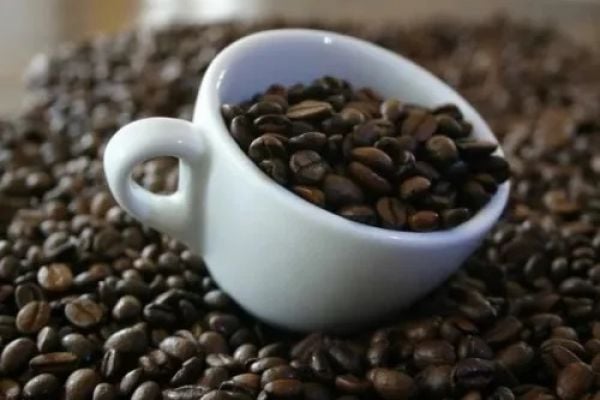Are natural wines simply a transient fashion, or are they here to stay? Gerard Maguire, of 64Wine in Glasthule, Co. Dublin, looks at the trend
I have been a wine enthusiast for several decades and have witnessed many trends. Most peter out. I try to ignore the trends and have remained consistent in my preferred style of purity and, most importantly, for wines that are expressive of their origin rather than of their winemaker.The wine industry is no different to any other. It needs drama or fashions to promote sales. Producers and retailers need to create points of difference to heighten profiles and increase consumer interest.So when the “natural wine” movement began to win column inches in respected publications I became curious.What exactly is natural wine? Unlike the organic and biodynamic movements, there is no certification for natural wine, nor is there a set of defined rules that bind this group. Predominantly old world-based, with greatest support in France and Italy, the movement has now spread its influence into New Zealand, Spain, Australia, Georgia, Austria, Slovenia and beyond.This group are as much defined by what they are against as about what they are for. They eschew wine additives with the exception of sulphur dioxide, they do not use wine manipulative processes such as reverse osmosis (reducing alcohol, removal of water, volatile acidity) cryo-extraction and other such techniques. Powered tannins are not added and the use of new barrique is frowned upon. Producers are generally organic or biodynamic. Hand harvesting of grapes is encouraged too, as is the use of natural yeasts.Their goal, it would appear, is to return winemaking to its origin before the technical and scientific advances began to influence the process, and certainly away from commercial mass production. The wines are supposedly natural, all the way from planting through to bottling.My early curiosity was heightened by the truly radical and controversial wine making of Josko Gravner from Friuli in the North East of Italy. A highly successful wine maker firstly of large volume varietal wine and then of barrique aged wines, he abandoned a successful formula in search of original wine making. He researched the oldest form of winemaking on record and traced the use of terracotta amphorae to Georgia in the former USSR. He transported them back to his winery, sank these huge semi-porous pots into the ground and embarked on a truly radical process. His whites were made with lengthy soaking of the berry juice with the skins (maceration). Natural yeasts worked the grape sugars. He waited. What was produced was a cloudy, deeply-coloured 'orange wine'. These wines were met with controversy. Many wine reviewers slated them. Finding it impossible to find his wine in Ireland and nearly impossible to find it in Italy, I finally came across his Breg Gravner, a blend of Sauvignon, Chardonnay, Pinot Grigio and Riesling.I brought the bottle home and decanted it. It was orange and cloudy. It was nutty and flat, tasting of bruised apples. The flavours were persistent. Was I blown away by the quality? Certainly not. I had never tasted any wine like it. In truth, had I not known of its journey from vine to glass, through the mash of skins and terracotta pots, I would have tipped it down the sink. Maybe my reluctance was rooted in my lack of exposure to real wine, 'natural wine.'Shortly afterwards, I was kindly invited to a natural wine tasting in Dublin. The wines were presented by the leading natural wine suppliers in London – Cave de Pyrene. I was fascinated by the range of wines that fitted into the category: Loire wines, Brunello from Montalcino, Sicilian and Rhone wines.At the end of the tasting I was more confused about the concept, but much clearer on why it was controversial.Chemicals are generally used in winemaking for sound, well-tested scientific reasons. The control or elimination of bacteria, the prevention of oxidation which sooner or later destroys the product and the prevention of volatile acids converting the wine into vinegar. Unless circumstances are ideal and great care is taken in the handling and transport of the wine, the product's integrity is damaged; in many cases destroyed.The wines I tasted included several with unacceptable levels of brettanomyces, a spoiling yeast, some were oxidised and three had that horrible, rotten-egg aroma of sulphides, that develop during fermentation. Wines varied from clear to cloudy, from very good to unacceptably poor.Following the tasting, we stocked eight natural wines in our wine shop. These represented wines of a very high quality and acceptable to most palates. However, even so, I was left uncertain and confused by the finished product. The concept I loved – authenticity; man acting as a steward; the protector rather than the manipulator. These are artisanal wines rather than the commercial monsters that are being offered each day to consumers. In September 2011, David Gleave, MW, a man for whom I have a great deal of respect, penned an article in Decanter magazine under the banner “How dare they arrogate the term natural”.I looked up “arrogate” – “to appropriate to oneself without right”. Harsh words, I thought, from the managing director of Liberty Wines.I needed to taste more to delve a little deeper before I could understand or before I dared label this movement a fad or a fashion without substance. Authentic Wine, a book by Jamie Goode and Sam Harrop MW, is an informed and thorough examination of the movement and journeys through the organic and biodynamic philosophies. Winemakers renowned in their field are interviewed. Examples of the most controversial winemakers are given:Josko Gravner; Friuli Italy. Ted Lemon; Litterai wines, Sonoma, California. Alistair Maling; Villa Maria, New Zealand. James Millton; Gisborne, New Zealand. Frank Cornelissen; Sicily, Italy. Stanko Radikon; Friuli Italy. Jules Chauvet; Beaujolais, France. Nicolas Joly; Savenniere, Loire, France.This is to mention just a few. The authors' conclusion lacked precision: “we see a bright future for the wine industry. We strongly believe that authenticity is the way forward. It would be bad news if there was a schism in the industry: at one pole, authentic wine hidden away and found only by a few; at the other, the wine industry of manufactured commodity wines stripped of soul and sense of place and becoming the only visible face of the wine industry”.More and more was written. Jancis Robinson MW joined the debate in October 2011 in the Financial Times, where she commented on other publications but carefully avoided an opinion on the movement itself.Next stop on my journey was Paris. In many ways viewed as the coalface for the movement, where wine bars and restaurants dedicated entirely to natural wines, thrive. Restaurants – Racine in Passage des Panorama, Le Baratin, Rue Jouye-Rouve, and Le Comptoir des Relais in Carrefour de Odeon.I drank my way through these three restaurants, tasting all their wines by the glass. As I sat in the departure lounge in the airport, I regretted the trip. I had one single decent glass of wine over an entire weekend! The others represented at best a struggle and at worst were undrinkable.All the same, natural wines have such a noble objective that it could not be dismissed without tasting the leading wines in their field. The opportunity presented itself to go to the Raw Wine Fair in London at the end of May. Present would be some of the most controversial winemakers in the world of wine.Nicholas Joly from Chateau de la Roche aux Moines in the Loire Valley; Stanko Radikon from Oslavia in Friuli in Italy, Elisabeth Foradori from Trentino in Italy, James Millton from Gisbourne in New Zealand, Frank Cornelissen from Sicily. Over 200 exhibitors from the Natural Wine world.Rafa and I were there at 8.30am as they opened the doors for the winemakers. We slipped in and began in earnest. Many of the exhibitors were still in nearby coffee shops.All day long I smelt, sipped and spat. I watched as winemakers posed for photographs with Nicholas Joly. Jancis Robinson and Stephen Spurrier consulted each other. In fact, many conventional winemakers from all over the world, who were not exhibiting, had travelled to this event. At the last
table I visited, I stood listening to Jean Paul Brun of Domaine des Terres Dorees in Beaujolais .The vast room emptied. I had finally reached some conclusions on Natural Wine.Their professed goal was to present wines influenced as little by man and his manipulative processes, his technologies and chemicals.The wines would be more expressive of their origin and of their natural qualities.For me the radicals, the big names failed to deliver on several important fronts but delivered in others. Gravner and Cornellison’s wines had a sameness, nutty oxidised, bruised apples and a salty minerality. The prolonged skin contact (maceration) with lengthy fermentation stripped these wines of their varietal integrity or character. Sauvignon tasted the same as chardonnay or Tocai Friuliano. Wines from Friuli tasted the same as wines from Sicily or Slovenia. The slow oxidative amphorae wines tasted similar, whether from Frank Cornellissen or from Francesco Cirelli in Abruzzo. Surely this defeated the objective.Surely the vast difference in the flavours of the grapes as they ripen on the vine ought to be reflected in the glass? The loss of that flavour, the fruits’ true character, defeats the nobility of the objective.As I navigated the room and tasted so many wines burdened with what I regarded as unacceptable levels of oxidation (nutty characters), reduction (sulphurous aromas), brettanonyces (barnyard or rancid character described by many as’ sweaty saddle’ aroma), and each being characterised by the winemaker as “terroir”, I felt a little let down by this rather trite explanation for those flaws.Each wine had its declared level of added sulphites, no added sulphites being the goal presumably. However as I cast my eye back over my notes, all the wines I loved had sulphites added.As I reread my notes on the train back to Stansted, I noticed the absence of the words, vanilla, caramel, or cedar from every note. Not one wine exhibited the use of new oak. For that single fact I would have travelled to London to taste the wines as I believe the character to be a seasoning too far for a wine of quality.So am I negative in my findings? Will I avoid natural wines in future?The answer emphatically is NO. What I found in London was there are essentially three categories. First the amphorae wines which have a distinct niche in the wine catalogue. These wines defy convention. These are serious winemakers and uniquely skilled in their field; the wines are delicate and distinctly mineral in style but lack varietal expression. The second category, those who have not managed to control faults or are unable to do so and these people do no service whatsoever to the natural wine movement or indeed the wine industry. Regrettably I see these as using the umbrella of “natural wines” as a marketing tool or smoke screen for poor winemaking.And finally, there are the creative and wonderful winemakers who follow organic/biodynamic principles, who manage and limit the use of chemical intervention depending on the particular vintage, who use sulphur sparingly but do not abandon it at the expense of quality. They tended to be concentrated in the same regions where there is a history of minimal intervention. Regions such as Alsace, Southern Rhone, Loire, Languedoc, Burgenland in Austria, Friuli and Trentino in Northern Italy all had strong representation.In this third category, there were many and I name just a few who really impressed with a combination of purity of style, mineral expression, varietal typicity and plain old honest-to-goodness great winemaking. Each wine had had low doses of sulphur added to protect the final product. Natural wines in the hands of the right artisans are no mere fad. They are an important and dynamic addition to any wine cellar.My final word on the subject is reserved for one of the wine world’s most controversial characters and strong proponent of natural wine-making, Nicholas Joly, a man who has managed to polarise opinion like no other wine maker I know.Jacqueline Friedricj, author, said once “The problem is, incredibly, that Nicholas Joly doesn’t like wine.” Andrew Jefford on the other hand is hugely supportive. He makes the expensive Coulee de Serrant from what is believed to be the best vineyard site in the Loire. I found Joly's wines heavy and hot in alcohol 15% and 15.5% ABV. They lacked delicacy, and balancing freshness from acidity and minerality. For me his wines were clumsy and lacked balance. I’m afraid I join the No voters on Mr. Joly's wines. More controversy than quality!
Follow Gerard Maguire on Twitter @64_wine, email: [email protected]









